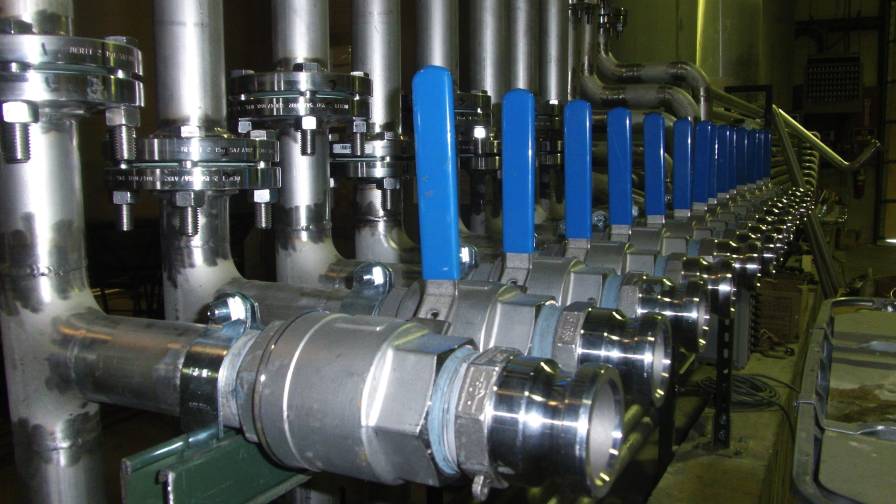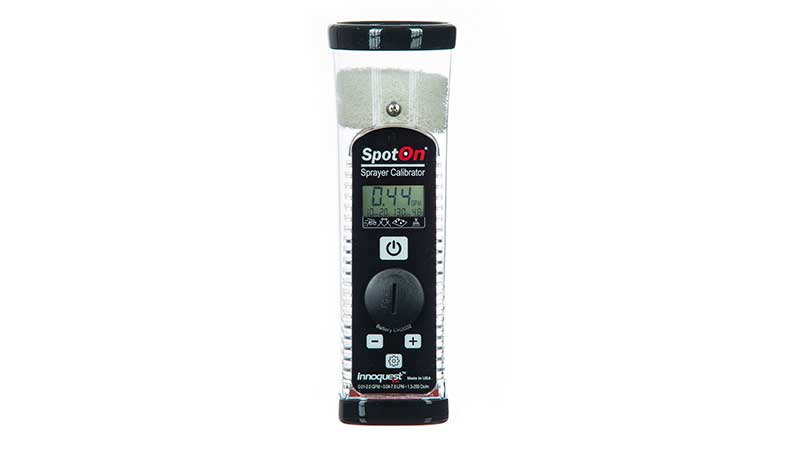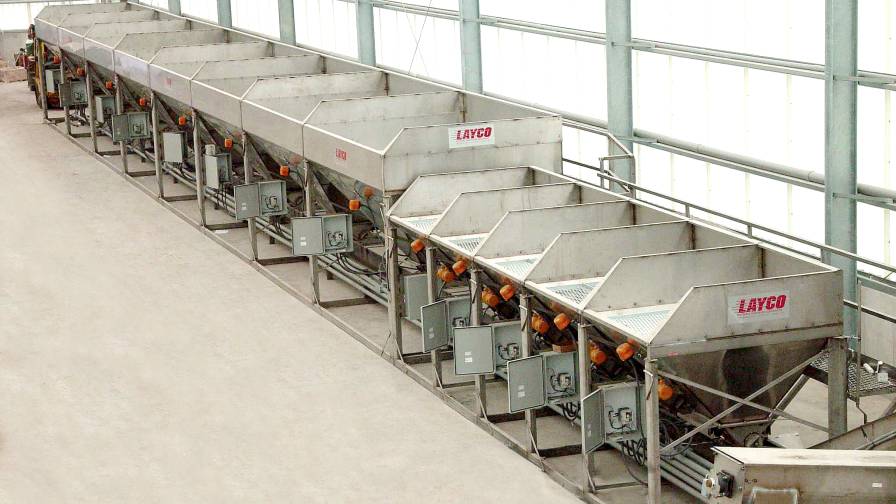Ag Retail Plants Adapt Designs, Software

Illinois Oil Marketing Equipment, which provides tanks and plumbing for plants, has witnessed ag retailers needing to increase efficiencies and acres served by their fewer individual facilities.
A host of factors could be cited for “the rise of the machines” in ag retail plants — and the need for ever more sophisticated software to help run them: blender designs, new fertilizer products, precision advances, personnel challenges, larger farms.
“Almost 100% of ag retailers we have installed for are buying and using full automation systems,” says Mark McLaren, Illinois Oil Marketing Equipment, which supplies tanks and plumbing for fertilizer plants. “They provide the ability to get to the desired end result with less risk, less grief.”
Changing Times
New blending systems that have been released over just the last few years are examples of how software/automation companies have to keep up with facility demands, says Steve Swift, vice president of corporate sales with Kahler Automation. He cites two innovations in particular: high intensity mixers (Waconia-Sackett and Yargus) and new tower configurations (InterSystems).
One driver of blender changes has been the growth of micronutrients, say plant experts. Some micros pose more challenges than others. Dave Junge, president of Junge Control, describes how certain products can stain pipes, making it very difficult to clean the system for the next customer’s order. His firm has developed techniques to inject the materials to minimize problems — and will continue to find more ways to handle them better.

At the new Junge Innovation and Training Center, staff conduct numerous training sessions annually as well as tours for prospective and existing customers on how Junge Zone Automation can help them.
That creativity can be a huge asset to retailer customers, says Junge. Plus, his team has designed more than 800 systems and has learned what works — and what doesn’t — along the way. “It’s not just the good things,” he points out. “It’s the experience we’ve seen: one example is how the lid of a strainer can become warped or how a gasket blows out because of mistakes made downstream. We know those mistakes so we advise customers if they want to try something unique. In fact, in our new 8,000- square-foot innovation and training center, Junge has a Wall of Fame where we list and honor the people that have had great ideas that we have implemented into our standard designs. Another wall highlights the challenges of attempted innovations that we need to stay away from.”
Kahler introduced its Streamline system just over two years ago, and now the product is “really starting to get some traction,” notes Swift. He sees retailers getting more into on-site logistics all the time, in truck staging in particular.
Kahler’s new Terminal Management 2 (TM2) web-based software for bulk material facilities interfaces with retailers’ agronomy packages, allowing users to track product information and movement remotely. Tender and floater drivers, for instance, can be tracked and communicate with plants. “As some of these modern facilities get bigger and service more areas, we’re doing our part to stop the tender driver from having to run upstairs and get the paperwork if they can just receive the information on their iPad in their vehicle,” explains Swift.
In fact, with TM2, Kahler can access all facets of a customer’s fertilizer plant on-line, to aid in service and troubleshooting.
To help better move product in liquid automation, Kahler introduced the SmarTouch 4000 PLC integrated control panel — which offers touchscreen interfaces.
For 2017, Yargus has introduced the LAYCO Dashboard, a cloud-based service that offers real system monitoring, blend reporting, inventory management and system management. “The LAYCO Dashboard is viewable both onsite and remotely for companies with multiple sites — and users can easily switch between the different sites,” explains Samantha Schultz, programming lead. The LAYCO Dashboard also offers site view and animation that is simple and comprehensive. Additions to a system are easily updated in the dashboard, so customers can keep current on their systems.
New Arena For Data
New opportunities in precision ag and data are playing a role in plant software development.
For instance, AgWorks acquired the data analytics company HighQ in 2014 and is re-launching its product in 2017. The uses here? “If AgWorks is your operational software, you have 100% of what was applied to any given field. We house both straight-rate and variable rate (VR) application details in our software, and that is incredibly valuable if you’re looking for answers,” says Greg Duhacheck, president of AgWorks, LLC. “Our customers are excited about how HighQ can help them benchmark their own sales programs as well as allow for their growers to be informed about what’s working and what is not.
Traditionally analytics in the ag market space has been thought of as an extension of “precision,” but statistically, VR only makes up about 30% to 40% of what happens on a field, Duhachek points out. Trying to answer questions about how effective a particular application may or may not have been is not a “precision issue” — it’s a data issue, he says, adding, “You can’t analyze what you don’t have, and AgWorks provides what retailers need.
“I think the surviving software providers will have to ‘do more with the data,’ which is why we’re investing heavily in HighQ. We can no longer expect our customers to do without meaningful innovation. We have innovation in our space, but it’s out at the very point.”
Investment Solid
Companies CropLife® spoke with were somewhat surprised at strong sales in 2016 in spite of uncertain crop prices. “A pleasant surprise has been the number of ag retailers investing in the future even as commodity prices have moved downward,” says Illinois Oil’s McLaren.
He’s been seeing retailers needing to increase efficiencies and acres served by their fewer individual facilities. (He’s also noticed “a very slight increase” in demand from farmers who want to store larger quantities of products on the farm.)
Junge has also experienced an increase in business. “I think the reason is when things are going great and everybody is profitable, you don’t have to pay a lot of attention to details and minor blending errors,” he says. “When things are a little tight, you want to make sure that you’re perfect, and our equipment and software helps people be perfect, become more efficient and accountable. That’s why I think it’s actually easier for us to impress people on the need for our product now.”
AgWorks has just put to bed its best year ever, reports Duhachek. “I believe that the reliance on real-time inventory and fleet information, which we provide, is much higher in a down ag market than when times are good, which is keeping our sales strong,” he says. “With the historically high commodity prices we’ve seen throughout much of the last decade, one could argue that managing inventory and day-to-day operations could ‘afford’ to be a bit lax, but as those high prices have turned negative, knowing what’s happening in your operation in real-time is incredibly valuable.”
A number of companies in the automation and software segment have recently adjusted their market outreach.
In the past, Kahler always handled its dry equipment sales personally and engaged distributors for liquid sales. Last May the company brought the liquid end in-house. The move has been profitable, even with challenges in the ag economy and a new staff to handle the change.
“The positive twist is that customers can have more direct contact with Kahler as far as training and service and needs,” points out Swift.
Already strong in the Corn Belt, Junge Controls has decided to branch out and has brought on a distributor for its Zone Automation lines — Dultmeier Sales with locations in Omaha, NE and Davenport, IA — to cover Illinois, Iowa and Nebraska. Junge sells nationally but wanted more “boots on the ground” in this region, explains Dave Junge. “Once this first dealer goes through one season with us and all our processes get ramped up and proven, we’ll be looking for more dealers and authorized installers in other regions.”






